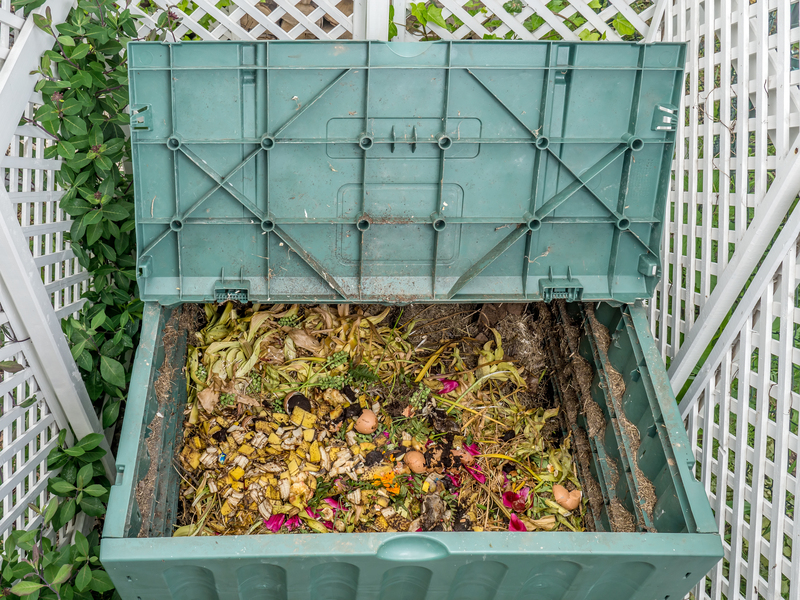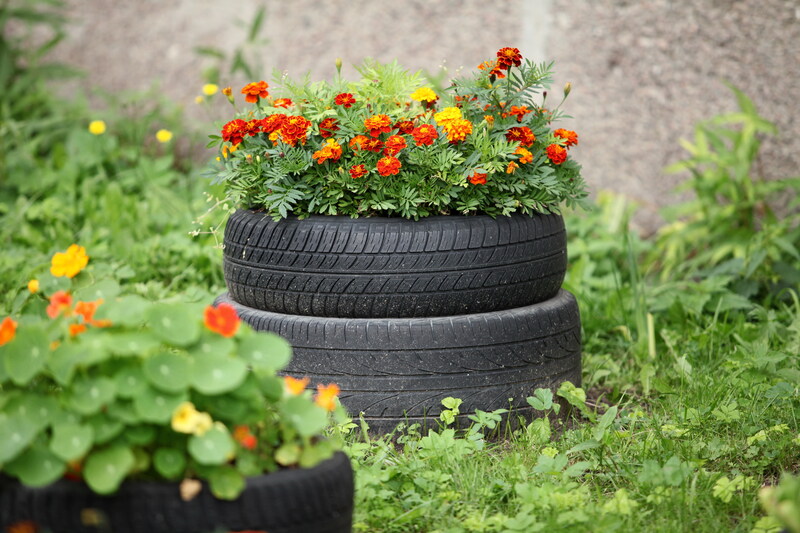Sustainable Choices to Replace Plastics
Posted on 30/04/2025
As our planet grapples with climate change, environmental degradation, and the overflowing of landfills, the quest for sustainable alternatives to plastics becomes more urgent. Plastics, derived primarily from fossil fuels, contribute immensely to pollution due to their non-biodegradable nature. In response, innovators, scientists, and environmentalists from around the globe have been striving to identify and create sustainable materials that can supplant conventional plastics.
Why Sustainability Matters
Sustainability is not just a trend; it's a necessity for the survival and health of our planet. Unsustainable practices, such as excessive plastic production, lead to pollution in our oceans, harm wildlife, and even enter our food chains. Microplastics have been detected in drinking water, seafood, and other food products, posing potential health risks to humans.
Replacing plastic with sustainable choices greatly reduces the environmental impact caused by plastic production, which is energy-intensive and releases significant carbon emissions. Sustainable materials, such as biodegradable alternatives, also help mitigate waste management issues, as they are designed to decompose more naturally and quickly.

Biodegradable Plastics
Biodegradable plastics represent a promising alternative to traditional plastics. These materials can break down more quickly under certain environmental conditions, thus reducing their impact on landfill overflow and ocean pollution. One of the most well-known types of biodegradable plastics is polylactic acid (PLA), which is derived from renewable resources like cornstarch or sugarcane.
Other biodegradable polymers, such as polyhydroxyalkanoates (PHA) and polycaprolactone (PCL), are also being developed and utilized as replacements for conventional plastics. However, it is crucial to note that the biodegradability of these materials depends on specific conditions, such as industrial composting facilities, and they may not break down effectively in natural environments.
Plant-Based Plastics
Plant-based plastics, also known as bioplastics, are derived from renewable biomass resources, including corn, sugarcane, and other plant materials. PLA, mentioned earlier, is one of the most common types of plant-based plastics. These materials not only offer a reduction in carbon footprint during production but also present an eco-friendlier disposal option.
Nevertheless, the production of bioplastics can sometimes compete with food sources, potentially leading to food security issues. Furthermore, while bioplastics can be more sustainable, they aren't always biodegradable, thus underlining the importance of proper waste management systems to ensure their environmental benefits.
Recycled Plastics
Recycling existing plastics is a critical strategy for reducing the accumulation of plastic waste. By converting waste materials into new products, we can extend the lifecycle of plastics and minimize the demand for virgin plastic production. Innovations in recycling technologies have improved the efficiency and quality of recycled plastics, making them more viable for a broader range of applications.
For instance, polyethylene terephthalate (PET), commonly found in beverage bottles, can be recycled into new bottles, clothing, and other products. High-density polyethylene (HDPE) and low-density polyethylene (LDPE) are other examples of plastics that are commonly recycled. Nonetheless, recycling systems vary globally, and the effectiveness of recycling programs largely depends on public participation, infrastructure, and technology.
Edible Packaging
An emerging and innovative solution to the plastic crisis is the development of edible packaging. These products are designed to be consumed along with the food they encase or to biodegrade harmlessly if not consumed. Edible packaging can be made from a variety of materials, including seaweed, rice, and wheat.
One example is seaweed-based packaging, which offers a promising alternative due to its natural abundance and minimal environmental impact. Companies like Notpla have developed edible seaweed-based sachets that can encapsulate liquids, providing a sustainable alternative to single-use plastic packets.
Edible packaging not only addresses the issue of plastic waste but also offers potential health benefits by incorporating nutritious ingredients. However, challenges such as maintaining hygiene and durability need to be addressed to make edible packaging a mainstream solution.
Reusable and Durable Alternatives
Encouraging the use of reusable and durable materials can significantly reduce plastic consumption. Reusable bags, containers, and straws made from materials like cotton, stainless steel, glass, and silicone are gaining popularity as they offer long-term solutions to single-use plastics.
Stainless steel and glass containers, for instance, provide safe, durable, and easily washable options for food storage and transportation. Silicone products offer flexibility, durability, and are often heat-resistant, making them ideal for a variety of uses from baking mats to foldable containers.
By adopting a culture of reuse, we can make a substantial impact on reducing plastic waste. This requires a shift in consumer habits, increased awareness, and supportive policies to promote the use of reusable alternatives.
Innovative Materials and Research
The quest for sustainable alternatives to plastics has spurred significant research and development into innovative materials. Scientists are exploring the potential of various natural resources and waste products to create sustainable and degradable materials.
One promising area of research involves mycelium, the vegetative part of fungi, which can be grown into various shapes and structures. Mycelium-based materials are not only biodegradable but also exhibit properties such as fire resistance and insulation, making them suitable for packaging and even construction applications.
Another exciting development is the use of bacterial cellulose, which can be produced through the fermentation of agricultural waste. Bacterial cellulose has a high degree of purity and mechanical strength, making it a potential candidate for sustainable packaging and textiles.
The Role of Policy and Regulation
The transition to sustainable alternatives to plastics requires supportive policies and regulations at local, national, and international levels. Governments and regulatory bodies play a crucial role in promoting the use of sustainable materials and steering industries away from conventional plastics.
Legislation banning single-use plastics, implementing extended producer responsibility (EPR) programs, and incentivizing the research and development of sustainable materials are essential steps towards achieving a plastic-free future. For instance, several countries have already banned single-use plastic bags and straws, encouraging the adoption of alternatives.
Moreover, international agreements and collaborations, such as the Global Plastics Treaty being developed under the auspices of the United Nations, aim to address plastic pollution on a global scale, fostering cooperation among nations to combat this pressing issue.

Consumer Awareness and Behavior Change
Ultimately, the success of replacing plastics with sustainable alternatives hinges on consumer awareness and behavior change. Educating the public about the environmental impacts of plastics and the benefits of sustainable materials is crucial in driving demand for eco-friendly products.
Consumers can make a difference by opting for products with minimal or sustainable packaging, supporting companies that prioritize sustainability, and advocating for better recycling and waste management practices. Initiatives such as zero-waste movements, plastic-free campaigns, and eco-labeling help raise awareness and encourage responsible consumption.
Conclusion
The challenge of replacing plastics with sustainable alternatives is tremendous, but it is a necessary endeavor for the health of our planet and future generations. Biodegradable plastics, plant-based materials, recycled plastics, edible packaging, and reusable alternatives offer promising solutions to the plastic crisis.
However, addressing this issue requires a multifaceted approach involving innovation, research, supportive policies, and consumer behavior change. By working together, we can reduce our reliance on plastics and move towards a more sustainable and environmentally friendly future.

 020 3744 5712
020 3744 5712










